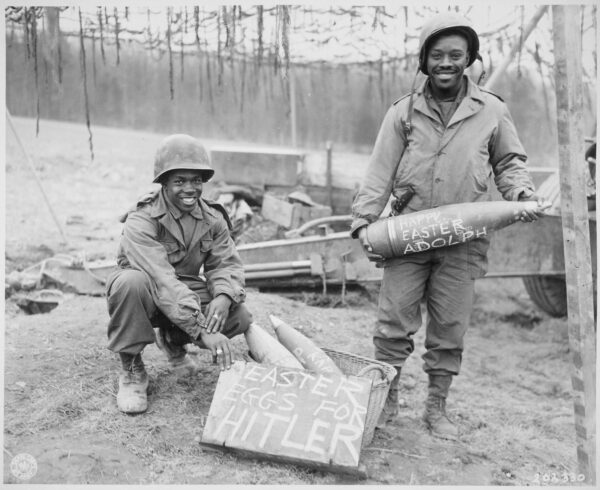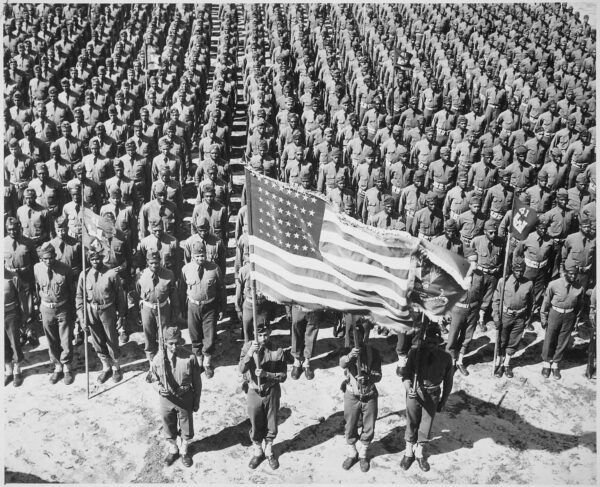
Racism Abroad and at Home: African American Soldiers During WWII
Explore how the experiences of African American soldiers during and after World War II impacted the development of the Civil Rights Movement of the 1950s and 1960s.

September 16, 1940
The Selective Training and Service Act of 1940, also known as the Burke-Wadsworth Act, is signed into law by President Franklin D. Roosevelt. It establishes the first peacetime draft in U.S. history, requiring men between the ages of 21 and 35 to register for military service.
June 25, 1941
After much pressure from A. Phillip Randolph, President Franklin Delano Roosevelt issues Executive Order 8802. The order prohibits racial discrimination in the Department of Defense.
December 7, 1941
Pearl Harbor, a U.S. Naval Base in Hawaii, is attacked by Japanese bombers. This act of aggressive became the catalyst for the U.S. to enter World War II.
March 22, 1942
The Tuskegee Airmen are founded. They are the first all-African American bomber unit in the Army Air Corps.
June 6, 1944
Allied forced land on the beaches of Normandy, France. The invasion marked a significant turning point in the European theater and led to the liberation of Western Europe from Nazi control.
February 3, 1945
The 6888th Central Postal Directory Battalion, an all-Black female unit, is deployed to England and France. Their mission is to clear a backlog of mail for American troops.
August 6 and 9, 1945
Atomic bombs are dropped on Hiroshima and Nagasaki by the U.S., leading to Japan’s surrender and the end of World War II.
December 5, 1945
The Selective Training and Service Act of 1940 expires, officially ending the draft. The U.S. military transitions to an all-volunteer force until the draft is reinstated for the Vietnam War in 1969.
July 25, 1948
President Harry S. Truman issued Executive Order 9981 that ended segregation in the armed forces and paved the way for the desegregation of the military.
Featured in

Explore how the experiences of African American soldiers during and after World War II impacted the development of the Civil Rights Movement of the 1950s and 1960s.